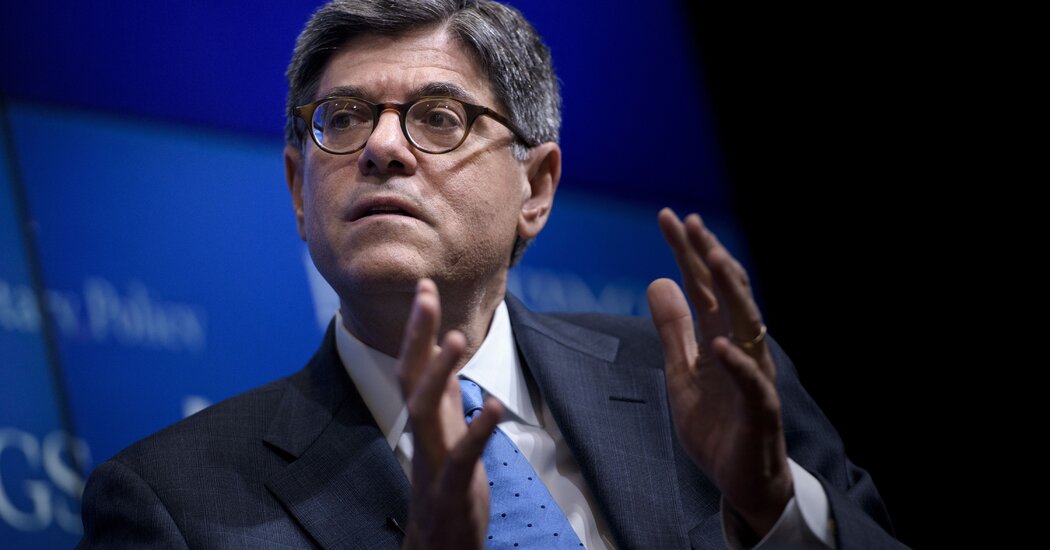What Happened to ‘Defund the Police’ Efforts in Minneapolis and Other Cities?
More than three years after the murder of George Floyd focused the nation’s attention on racism in law enforcement, Minneapolis’s Third Precinct police station, which was set ablaze and looted during the tumultuous days after Mr. Floyd’s death, remains abandoned.
Once the city’s most modern police station, the building is now boarded up, tagged with graffiti and ringed with concertina wire — an unintentional monument to the national debate over public safety that led Minneapolis officials to consider disbanding the Police Department.
But three years after “defund the police” became a rallying cry across the nation, efforts to dramatically divert resources from police or do away with conventional policing entirely have largely been abandoned, too, in Minneapolis and beyond.
The movement faltered in Minneapolis after activists failed to build broad support for a goal that lacked a clear definition, and an actionable plan. As crime surged during the early years of the coronavirus pandemic and officers left the police force in droves, Republicans seized on the debate to paint Democrats as being recklessly soft on crime.
“The language and the politics prevented folks from delving more deeply into the core conversation some activists were trying to have,” said Nekima Levy Armstrong, a civil rights lawyer in Minneapolis who has been a critic of the Police Department.
The movement to abolish conventional police departments predates the murder of Mr. Floyd. In the years before his death, a Minneapolis group called MPD150 had been building grass roots support for a “police-free future” — a vision that contemplated a phased end to conventional policing by making dramatic investments in housing and social services.
Its leaders expected it would take many years for that transformation to gain significant political traction. But after Mr. Floyd’s killing, when parts of the city descended into anarchy, a group of young activists called Black Visions Collective, saw an opportunity.
Its first move was to corner Mayor Jacob Frey of Minneapolis outside his home in June 2020, and demand that he commit to abolishing the Police Department. As cameras rolled, one of the movement’s leaders made clear that they were seeking the outright disbandment of the Police Department, not a reallocation of resources.
“We don’t want no more police,” she said. “We don’t want people with guns toting around in our community.”
Mr. Frey, a civil rights lawyer in his first term as mayor, said he favored sweeping changes but not disbanding the police. As he walked away, demonstrators erupted in chants of “Go home, Jacob!” Mr. Frey described it as a “Game of Thrones-style public shaming.”
The next day, Black Visions Collective held an event near the site where Mr. Floyd was killed. They persuaded nine of the city’s 13 council members — a veto-proof majority — to commit to defunding the police.
Neither the activists nor the elected officials clearly articulated what disbanding the police would entail. Within days, several City Council members pulled their support, saying they had misunderstood the radical pledge that they had endorsed.
Black Visions Collective and several other groups that favored sweeping changes eventually set their sights on a more modest and attainable goal: a ballot amendment known as “Yes 4 Minneapolis.” It called for the establishment of a new department of public safety that would absorb some police functions while bolstering interventions that didn’t involve the police. The measure also would have scrapped the minimum police staffing level set by the city charter.
It was a debate that veteran police officers in Minneapolis followed with a mix of dread and outrage, said Sgt. Andrew Schroeder, who has worked for the department since 2014. Many of his colleagues left for other jobs or retired early.
“Who wants to put their lives on the line and make some split-second decision that may be the right one, and be crucified for it?” he said while patrolling the city late on a recent Saturday night. “It’s a heavy thing to think about.”
Black residents were divided over the calls to defund the police. Charlotte Hall, 62, who was born and raised in south Minneapolis, said she understood the outrage galvanizing young activists. But the vision struck her as utopian, she said.
“You can’t defund the police; you have to have police,” she said. “There’s bad police officers out here, but all of them aren’t bad.”
When voters had their say in November 2021, the measure to dismantle the Police Department failed by roughly 12 percentage points. Mr. Frey won a second term, handily beating opponents who favored defunding the police.
Mr. Frey said his administration had adopted a plethora of measures to increase transparency, reduce abuses and restore trust. They include consistent use of body cameras while on patrol, limiting the criteria for traffic stops, improving training and updating procedures to discipline officers.
“But that’s just reform, that’s on paper,” he said in an interview. “The harder part is having those reforms embedded throughout the department in a way that people actually feel the change in the street.”
And three years after Mr. Floyd’s murder, public safety issues remain raw and unresolved.
As city leaders debated the fate of the Police Department, officers left the department, many walking away with medical disability payments after seeking treatment for post-traumatic stress disorder. As of early June, the Minneapolis Police Department had 585 officers, down from 912 in 2019.
As police ranks thinned out, violent crime soared. Gang violence, once a modest problem in Minneapolis, became such a challenge that federal prosecutors charged 45 people suspected of being gang members in a pair of racketeering indictments in May, a first in the city.
Many residents have given up on the local public transportation system, where some stations increasingly have become gathering points for people who openly smoke fentanyl and other drugs. The number of car thefts and carjackings skyrocketed. As of early June, more than 4,100 vehicles had been stolen in the city this year, nearly twice as many as during the same period last year.
Even as its payroll dropped amid the flood of departures, the department’s budget actually increased in recent years. And the hollowed-out force has been a boon for private security companies, as more business have hired them. As of June, there were 181 private security companies in Minnesota licensed by the state, up from 155 in 2020.
Mr. Frey said that formidable challenges stood in the way of meaningful reform. Key among them is a patchwork of deals that the city has negotiated with the police union over decades that makes it difficult to hold officers accountable when they break rules or commit abuses.
In addition to those self-imposed policy changes, the city has agreed to adopt more far-reaching changes as part of negotiations with the Minnesota Department of Human Rights and the U.S. Justice Department.
Ricardo Levins Morales, an activist who supports shuttering the Police Department, said those measures would not lead to a meaningful change in the culture. He said new abuses inevitably would reignite calls for the kind of drastic action that the defund movement sought.
“I liken the emergence of movements to an incoming tide and the first wave comes up the beach and recedes,” he said. “It’s opportunity to look back and say, ‘Well, what were the constraints of the landscape that caused the wave to crash?’”
Last year, when city officials were looking for an experienced leader to take the reins of the understaffed and embattled police force, they zeroed in on Brian O’Hara, who was then a deputy mayor in Newark, N.J. The job was a minefield, but Mr. O’Hara said he was instantly interested.
“Everyone thought I was nuts,” he said.
Mr. O’Hara had played a leading role overseeing a period of transformation that followed a 2014 Justice Department report that found that officers in Newark routinely violated people’s civil rights. In a deeply polarized city, he saw an opportunity to rebuild trust by healing wounds that had been festering for generations.
“People think you either unleash the cops and deal with crime or you respect human rights,” Mr. O’Hara said. “I know from what I lived through in Newark that you can do both at the same time.”
But few doubt the difficulty of that balancing act and the depth of the chasm that remains between minority communities and the police.
Sheriff Dawanna S. Witt of Hennepin County, which includes Minneapolis, is the most senior Black law enforcement official in the city. But when she’s on the road in an unmarked car, the sight of a patrol car behind her fills her with fear, she said. She may be the sheriff, but in those moments she feels the city’s troubled past viscerally.
“If a squad car gets behind me, to this day, I get nervous,” she said.


